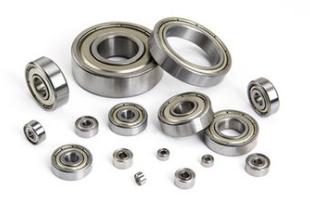"High-end bearings rely on imports, why can't we make them ourselves?" Wang Dongsheng, executive deputy director of Shandong Technology Transformation Center at the Chinese Academy of Sciences, found the answer after researching six provinces, including the three northeastern provinces, Zhejiang and Shandong. The biggest problem lies in the material. "Without good steel, high-end bearings will never be made".
There is a saying in the manufacturing industry, "wherever you turn, you need bearings". As an indispensable core component of mechanical equipment, bearings support mechanical rotating body, reduce its friction coefficient, and ensure its rotation accuracy. No matter aircraft, automobile, high-speed railway, or high precision machine tools, instruments and meters, the rotating part, all need the support of bearings.
The bearings in the engine are literally in purgatory -- not only are they running at speeds of tens of thousands of revolutions per minute for long periods of time, but they are also subjected to various forms of stress compression, friction and ultra-high temperatures. This puts forward high requirements for the accuracy, performance, life and reliability of bearings, and the key factor to determine these four points lies in its material.
Bearing manufacturing is required to be very harsh conditions, the need for a very complex manufacturing process and very good quality steel. After decades of efforts, China's shaft making process has been close to the world's top level, but it is a pity that up to now, the material needed -- high-end bearing steel almost all rely on imports.
China is not short of steel production, but top-quality steel is not easily smelted, and mechanical structures have many parts that face severe wear and tear. Even the bearings of some electric motors need to run continuously for the rest of their lives. Ordinary steel is simply impossible to complete such a mission, and the current domestic steelmaking only high output, there is no super high quality steel can be mass produced.
One of the industry's standards for measuring the quality of steel is the amount of oxygen it contains. "PPM" is a unit of oxygen content in steelmaking and means parts per million or parts per million. Generally speaking, in the steel industry, 8 PPM of steel belongs to good steel; The steel of 5 PPM belongs to the top steel, which is exactly what is needed for high-end bearings. The R&D, manufacturing and sales of high-end bearing steel are basically monopolized by the world bearing giants Timken in the United States and SKF in Sweden. A few years ago, they set up bases in Yantai and Jinan, Shandong province, respectively, to purchase low-end materials from China, use their core technology to make high-end bearings, and sell them to the Chinese market at ten times the price.
In order to make up for this regret, domestic researchers have also made a long effort. To solve this problem, researchers in Beijing have ripped apart whole steel blocks to make them stronger by adding rare earths to the process. It has taken the first step to produce good domestic steel.
Rare earths are known as "industrial vitamins", and rare earth steel refers to steel containing a certain amount of rare earths. In the 1980 s, China had rare earth steel research and development and application of high tide, the scientists widely believe that, in the process of steelmaking in rare earth is to solve the technical direction of high-end bearing steel, but after adding rare earth in steel, steel performance becomes downs, in the process of mass production is extremely easy blocking gate, in spite of years of research have failed to break through the technical bottleneck in rare earth in the steel industry applications from hot to cold.
By adding rare earths to the steelmaking process, high-quality steel can be made even stronger. But how to add, this is the core secret of the world's bearing giants. As a basin of water drops into a drop of ink, 1 ton of steel to add how many trace rare earth is more appropriate? How to add?
The problem remains unsolved, and as a result, steel companies have now virtually abandoned the use of rare earths in actual production, except for a few types of steel.
However, the development of high-end bearing steel is not all bad news.
The Institute of Metal Research, Chinese Academy of Sciences has made a breakthrough in the purification technology of rare earth steel
At the previous stage, the material processing simulation research team of Institute of Metal Research, Chinese Academy of Sciences, through the physical anatomy and calculation of a single weight and a hundred tons of large ingot, found that impurities were the main cause of uneven composition. Based on this, a new defect formation mechanism in steel was proposed, which caused a great response in the industry and was quickly applied. Since then, the team has developed the pure purification preparation technology of commercial rare earth alloy and the special addition technology of rare earth in steel, thus breaking the technical bottleneck of the industrial application of rare earth in steel, and realizing the smooth process and stable performance after adding rare earth in steel.
Recently, the relevant national ministries and commissions are brewing relevant policies to promote the localization process of high-end bearing steel. It can be said that we have taken a step forward to solve the problem of "jamming neck" of steel for high-end bearings.
